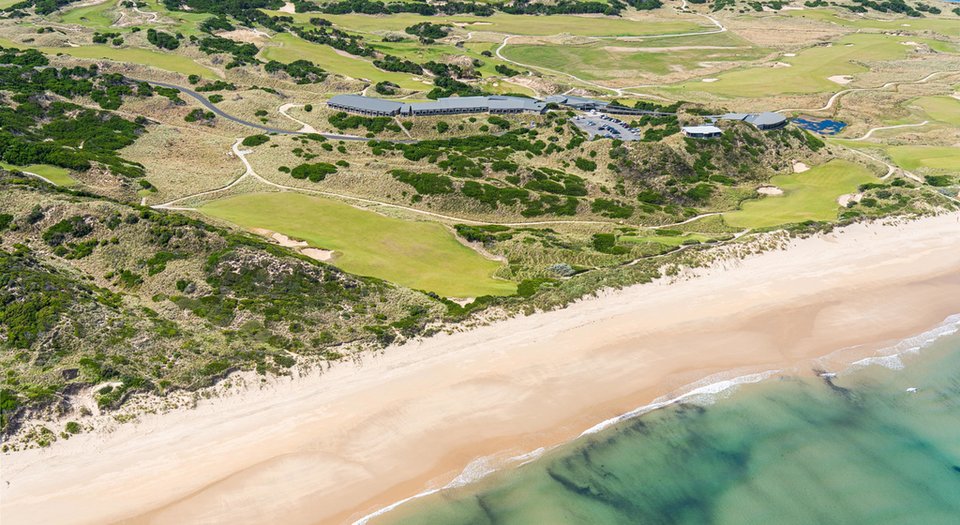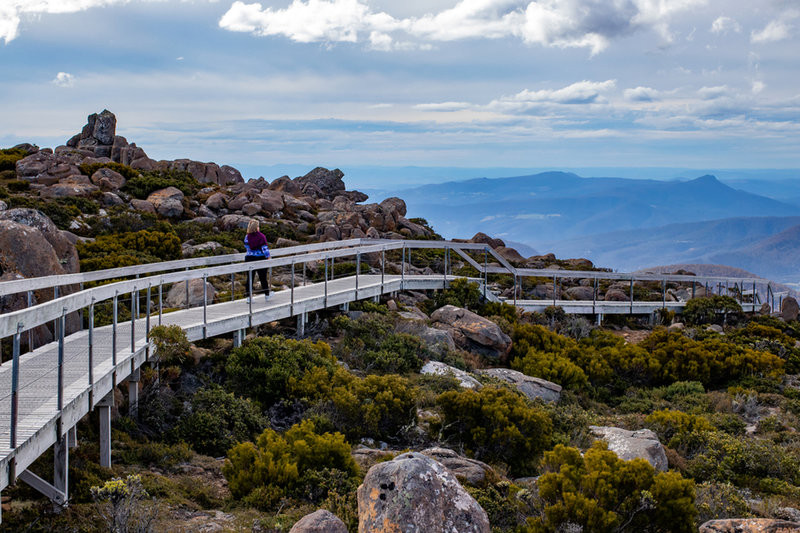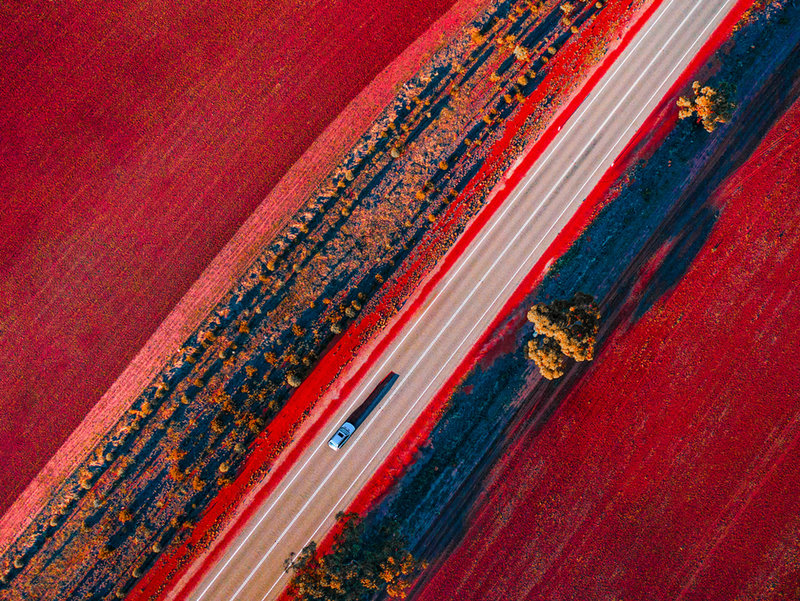
Regional Focus
False start: inside the disruption at Venture’s Riley iron ore mine
Venture’s controversial Riley iron ore mine in Tasmania has suspended operations after producing just a single shipment of iron. JP Casey asks if this is a temporary setback, or a sign of things to come in Tasmanian mining.
A
ustralian mining is the cornerstone of many of the world’s mineral products, and none more so than iron ore. In 2020, Australia dominated production of iron ore, producing 900 million tonnes of the metal, 37.5% of global production, and more than double the second-highest producer, Brazil. While the vast majority of this production is centred in the Pilbara region of Western Australia, farther-flung corners of the country are involved in the sector, most notably the island of Tasmania.
The Tasmanian Government reported in 2016/17 that the state’s domestic mineral reserves were valued at A$1.82bn. Furthermore, mineral extraction and processing accounted for more than half of the state’s mercantile exports, highlighting the significant contribution that mining is already making to the Tasmanian economy. Yet miners have not been satisfied to rest on this historic production, and are always looking for new mineral deposits to explore and exploit.
One such deposit is a two million tonne reserve south of Waratah, which is now home to Venture Minerals’ Riley iron ore mine. The mine is a relatively new project, and shipped its first products from the Tasmanian port of Burnie in August this year.
However, it has immediately run into trouble, as a tumbling global iron ore price and pressure from conservation groups have caused Venture Minerals to suspend production at the facility. While the miner insists that this is just a temporary setback, the plight of the project, and its eventual fate, could help set a precedent for large-scale mining on an island where mining is not yet entrenched in the local economy and culture.
External pressures, internal struggles
A range of external challenges facing the mine have contributed to the suspension of its work, which Venture dubbed a “temporary suspension” in its annual report, dated 30 September. Chief among these is the collapse of iron ore prices around the world as a result of the production disruptions caused by the Covid-19 pandemic, which have swept the financial viability out from under the new mine.
“The suspension of production at the mine is because it is not economically viable,” explains Scott Jordan, a campaigner at the Bob Brown Foundation, a conservation group that has consistently opposed the Riley mine.
“This high-risk project needs abnormally high iron ore prices (more than $120 per tonne). Without Covid-19 inspired iron ore shortages forced by mine closures in Brazil, this mine would not have commenced.”
According to Trading Economics, the global iron ore price has collapsed from a peak of $229.2 per tonne on 12 May this year to just $115 per tonne on 19 October. As key industrial producers, such as China and Brazil, have increased production, following disruptions earlier during the Covid-19 period, the value of iron has almost halved.
The suspension of production at the mine is because it is not economically viable.
Venture highlighted these disruptive economic factors as a key reason behind the suspension of production in its annual report. While the miner has not replied to requests for comments, its own reporting places blame for the disruption squarely at the feet of external market factors.
“In response to declining market conditions, the company is completing a full review of operations at the Riley iron ore mine to identify cost efficiency measures to offset some of the external market volatility beyond the company’s control,” said the miner in its latest annual report.
However, Jordan goes further, suggesting that some of the earlier disruptions to Riley’s production are, in fact, the responsibility of Venture.
“It was shelved in 2014 before commencement of mining due to normalised iron ore prices and then again in October 2020 after a short attempt at a quick and dirty start to dry screening of ore was rejected by customers who had entered contracts for wet screened ore,” says Jordan.
“Notably the dry screened material never left the site, and the much-trumpeted dry screening commencement coincided with a capital raising, then ceased the day after the capital raising was completed, with the mine going into a three-month hiatus.”

// Mt Wellington, Hobart, Tasmania, Australia - 11-28-2020: Regional alpine adventure options. Ideal for illustration of travel, tourism, climate and regional themed editorials and blogs.
Credit: Flexigav / Shutterstock.com
A victory for conservationists
Whatever the reason for suspension, and however long the pause lasts, the announcement has been hailed as a victory by conservationists, with Jordan declaring “good riddance” in the aftermath of the announcement.
Jordan works in the takayna/Tarkine region of northwestern Tasmania, which boasts some of the last remaining Gondwanan rainforest in the world, and considerable Aboriginal archaeology, and which he considers under threat by industrial activity, such as Venture’s mine.
“[The] Bob Brown Foundation is campaigning for the protection of takayna/Tarkine as a World Heritage Listed National Park, and it’s return to Aboriginal ownership,” explains Jordan. “Takayna/Tarkine has been verified as having both National and World Heritage values, including over the area targeted for the Riley Creek iron ore mine. This area needs to be protected, not plundered.
“The Bob Brown Foundation has conducted numerous protests at the Riley Creek site and at the port and warehousing facility in Burnie disrupting works, denying access, and forcing production halts. Around a dozen people have been arrested for locking onto machinery and gates.”
The miner has highlighted the relatively small nature of the deposit, which will cover just 120 hectares.
For its part, Venture has been careful to comply with a range of environmental regulations ahead of beginning work at the mine. The miner has highlighted the relatively small nature of the deposit, which will cover just 120 hectares, and the fact that it will comply with half a dozen air emissions regulations, alongside another four local laws concerning groundwater and wastewater management.
Indeed, the miner’s rehabilitation plans are robust, featuring monitoring of both groundwater and surface water, and have taken into account the single site of Aboriginal value in the region, which Venture describes as an “isolated artefact … outside the mine disturbance area”, and being a site of “low-moderate archaeological significance”.
Yet Joran and the Bob Brown Foundation have objected to many of Venture’s claims of environmental responsibility, most notably its treatment of local animal populations.
“There are significant questions relating to Venture Minerals’ environmental permits,” explains Jordan. “The Commonwealth permit contained a clause requiring that it must substantially commence [ore extraction] within five years [and] would require consent of the minister to do so. For five years, Venture submitted annual environment reports stating that it hadn’t substantially commenced [ore extraction].
“When the question of permit validity was raised by the Commonwealth, Venture revised their story to claim they had indeed extracted 10,000m3 of ore. This revised story was contradicted by the lack of a road use agreement, trucking contracts, absence of stockpiles and satellite photos showing no mining activity, as well as the aforementioned reports.
“The Commonwealth accepted Benture’s story, and fined them $25,000 for failing to notify the Commonwealth of substantial commencement or meeting conditions of the permit triggered by substantial commencement.”
Setting a new precedent
While the Riley mine itself remains in a state of suspended flux, the lessons learned at the project, and the precedents set by the continuation or ending of its operations, could have significant ramifications for Tasmanian mining in general.
Most notably, Venture plans to drill for tin at the Mount Lindsay deposit just a few miles north of the Riley mine. With the miner expecting to find more than 81,000 tonnes of tin metal at the deposit, this project could prove to have a much more significant impact on the local mining industry.
Much of the Mount Lindsay economic projections are based on predictions that tin will grow in demand and value, with the International Tin Association expecting global tin demand to increase by 60,000 tonnes per year until 2030, and the Australian Government already designating the Tasmanian mine as a critical minerals project.
However, Jordan is concerned that the Mount Lindsay mine, like the Riley mine, will only be profitable at the absolute peak of a mineral’s value, and that the financial viability of both mines is predicated on temporary spikes in resource value, rather than a more long-term change in the global mining market.
At normal prices the white shoe brigade at Venture will disappear, leaving an environmental mess and a string of broken promises.
“Over many years, our foundation has blockaded and fought the loggers to keep them out of these ancient and carbon-rich rainforests, and we have shown our resolve to do the same if mining companies come with intent to dig up these forests,” says Jordan. “Like Riley Creek, and Shree Minerals’ Nelson Bay River mine before it, Mount Lindsay is a fair-weather mine that can only be profitable at the very top of the boom.
“At normal prices the white shoe brigade at Venture will disappear, leaving an environmental mess and a string of broken promises.”
This is perhaps the most concerning element of the Riley mine, and its suspension and re-evaluation. It is the possibility that Venture is looking to chase short-term financial spikes with long-term mining projects, which will leave impacts on local environments and communities long after the fickle financial winds blow in a different direction.

// Main image: BRIDPORT, AUSTRALIA - Jan 21, 2021: Aerial view of the famous Barnbougle Dunes golf course at Bridport, Tasmania Regarded as one of the finest golf courses in the world.
Credit: Wirestock Creators / Shutterstock.com